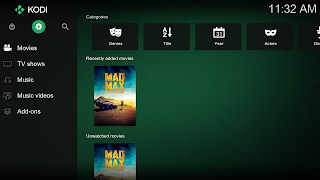Driving in Okinawa

As promised on my last post, this one is going to deal with driving on Okinawa. Driving has been one of the things that makes my travels so much fun. Sometimes even getting to a destination is an adventure in of its self! First off, they drive on the left side of the road. So the cars here have the steering wheel on the opposite side of the car from what I am used to. I still find myself getting into my car, and finding the steering wheel in front of me! Driving on the left side of the road took some getting used to. The trick I use to ensure I stay on the proper side of the road is, "driver's body to the road center." Road surfaces out here are different than in the States as well. Here the roads are paved with crushed coral instead of gravel. So the littlest amount of rain makes the roads slick. Because of this, on areas where traction is necessary, steep hills and sharp curves, they add a rubber type compound to the coral. This compound turns the coral red. It helps, but those areas are still slippery. They tell us when we get our driver's license, to drive on wet roads as if they were icy. That may seem excessive, but once you start sliding backwards down a hill because you can not get traction on a wet road, you realize how true it is. Yes that did happen to me.
They also use the metric system in Okinawa. All gas is sold per liter and all road signs display kilometers. For example, I put 21 liters of gas in my car to fill it up for a 58km trip to Nago at 120Y per liter. In American terms, I put 5.5 gallons of gas in my car to fill it up for the 36 mile drive to Nago at $5.27 per gallon. Yes, that is the correct price for a gallon of gas off base. On base, the gas is measured in gallons, and currently it is $2.65 a gallon. Needless to say, the fuel efficiency of cars is a big deal here. More on that later. The speed limits are given in Km/hr. On the Expressway, the local and only interstate, the speed limit is 80kph or about 50mph. On base the average speed ranges from 35kph to 50kph, or 21mph to 31mph. There are even areas where the speed limit posted is 15kph (9mph)! So I had to learn to slow down, because speeding fines can range as high as a $1,000. Also the international standard for road signs are used on the roads here. An example is shown on the picture at the start of this post. The red circle with the number in it is the speed limit sign.
I mentioned fuel economy earlier. This is a big cost issue out here. Not only because of the price of gas, but for yearly registration as well. The bigger the engine is in your car, the more your car costs to register. For example, a car with a V6 motor would get a 300 series plate and the cost to register it per year you be almost double that of a car with a small 4 cylinder motor with a 500 series plate. There is a class of cars here that are even cheaper to drive. They are called kei cars. They carry a yellow plate and can not have an engine bigger than 650cc or .65L. In other words, they just motorcycles with four wheels and a car body. They cost almost half as much to register per year as a 500 white series plate. You are probably asking why they make cars so small. It is to get around the "parking" requirement in the tax laws. In order to own a car you have to prove that you have land to park it on. Because their motors are so small, they are exempt from this requirement. For more information on kei cars, you can check out this article on Wikipedia located here.
Finally, I want to give you an example of a quirk that American's really have to watch out for while driving. All children here are taught that they can raise their hand in the air, and then cross the street. They can do this anywhere, except 4 lane roads and the express way, and will do it. Invariably what happens is they raise their hand in the air, and not look before they cross! So we are especially attentive while in area where children are present. If they do this, they have right-of-way. So one had better stop.
Well I have rambled on long enough. You all take care.



Comments
Post a Comment